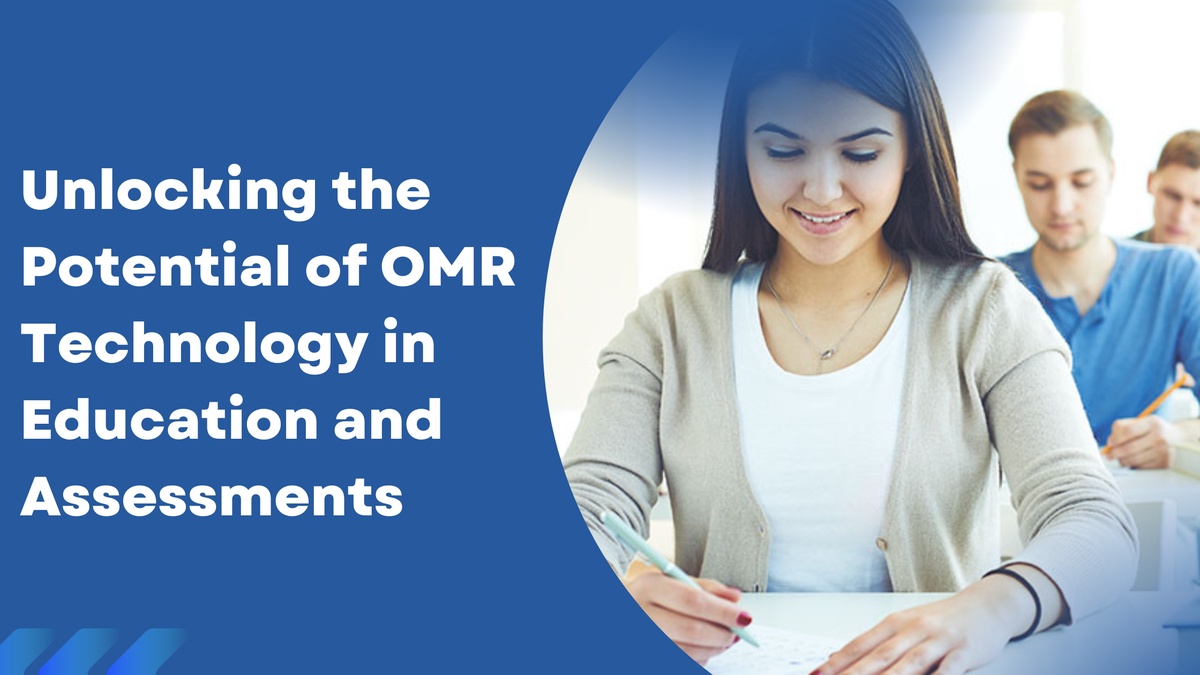In the digital age, technology has revolutionized various aspects of our lives, including education and assessments. Optical Mark Reader (OMR) technology, with its ability to capture data from paper-based forms swiftly and accurately, has emerged as a powerful tool in these domains.
This article explores the potential of OMR technology in transforming education and assessments, highlighting its benefits and applications.
Understanding Optical Mark Reader (OMR) Technology
Optical Mark Reader (OMR) technology refers to the process of electronically capturing and interpreting data from specially designed forms using an OMR scanner. These forms consist of predefined bubbles or checkboxes where participants mark their responses. The OMR scanner reads these marks and converts them into digital data for further analysis. OMR technology has gained popularity due to its speed, accuracy, and cost-effectiveness.
Enhanced Efficiency in Assessments
OMR technology has revolutionized the assessment process, particularly in large-scale examinations and surveys. By using OMR scanners, educators and examiners can process a significant number of answer sheets quickly and accurately. This eliminates the need for manual data entry and reduces human error, thus saving time and resources. OMR technology streamlines the grading process, allowing for faster result generation and feedback delivery, which is crucial in time-sensitive examinations.
Versatile Applications in Education
OMR technology finds applications in various educational settings. It is widely used in multiple-choice examinations, where participants mark their answers on OMR sheets. Additionally, OMR forms can be utilized for attendance tracking, course evaluations, feedback surveys, and data collection for research purposes. The versatility of OMR technology makes it adaptable to different educational contexts, enhancing efficiency and accuracy in data processing.
Accurate Data Analysis and Insights
OMR technology ensures accurate data collection and analysis, providing valuable insights for educators and administrators. The digital data obtained from OMR scanners can be analyzed using software tools, enabling the identification of patterns, trends, and performance indicators. This information helps educators make data-driven decisions, identify areas of improvement, and tailor instructional strategies to meet the needs of students effectively. OMR technology enables educational institutions to gain valuable insights into student performance, assess learning outcomes, and continuously enhance the quality of education.
Cost-Effectiveness and Scalability
OMR technology offers a cost-effective solution for educational institutions, especially in comparison to computer-based assessments. OMR scanners are more affordable than specialized computer systems, making them accessible to a wide range of institutions, including those with limited resources. Additionally, Optical Mark Reader (OMR) technology is highly scalable, allowing for the efficient processing of large volumes of data. It is a practical choice for educational institutions conducting examinations at a regional, national, or international level.
Considerations for Implementation
While OMR technology offers numerous benefits, proper implementation is crucial for optimal results. Institutions must ensure the quality of OMR forms, ensuring clear instructions and well-designed response areas. OMR scanners should be carefully selected based on the specific requirements of the institution, considering factors such as scanning speed, compatibility with software tools, and ease of use. Proper training for administrators and staff members is also essential to maximize the potential of OMR technology and ensure accurate data capture.
Conclusion
OMR technology has revolutionized education and assessments, offering enhanced efficiency, accuracy, and cost-effectiveness. With OMR scanners, institutions can process large volumes of data quickly, streamline the grading process, and gain valuable insights for data-driven decision-making. OMR technology's versatility makes it applicable to various educational settings and enables scalable assessments. As educational institutions continue to embrace technology, unlocking the potential of OMR technology in education and assessments will pave the way for improved learning outcomes and more efficient assessment processes.


No comments yet